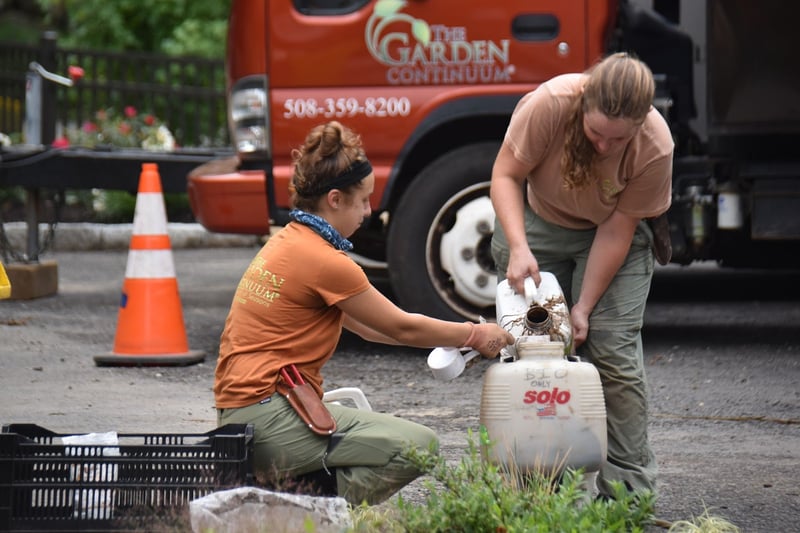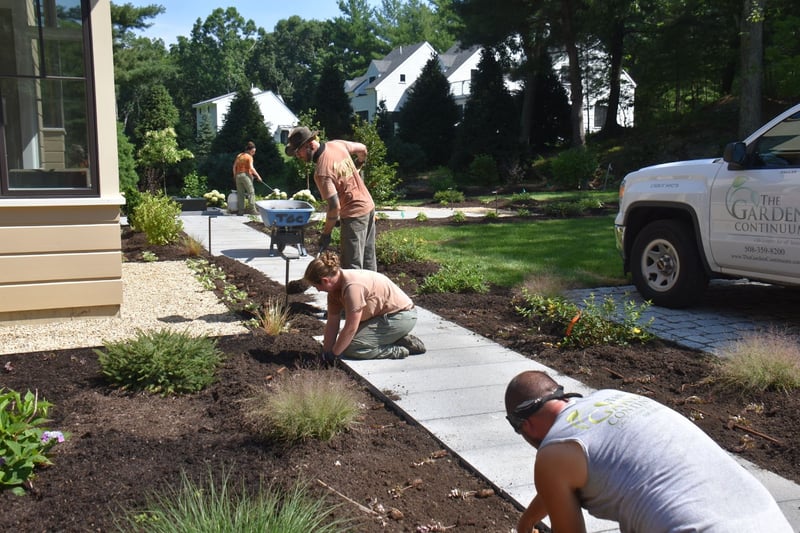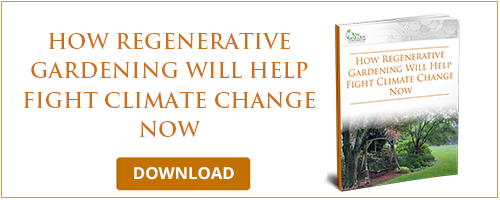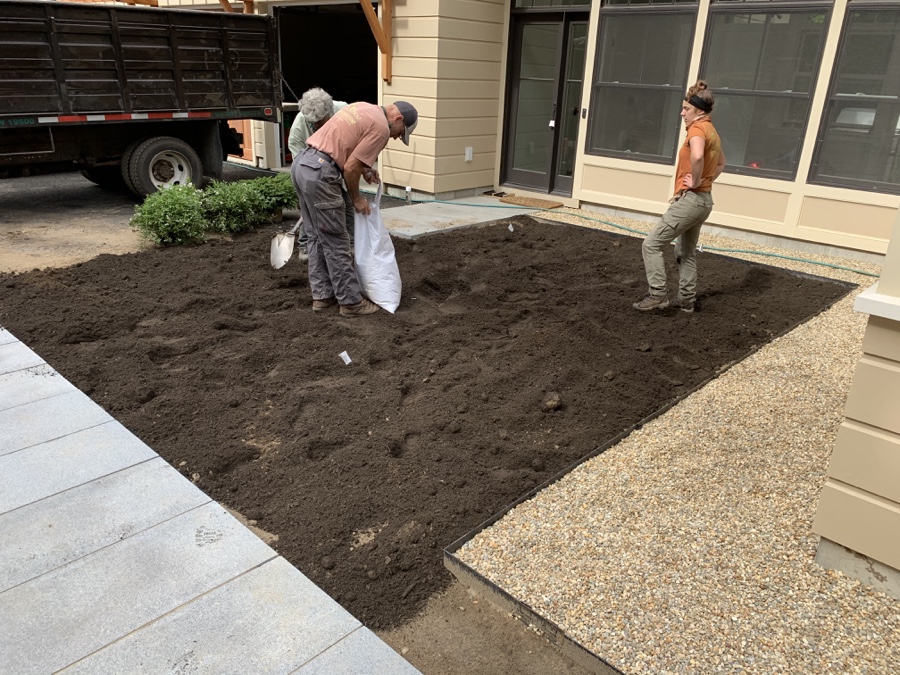There is no question that the climate is changing. The real question is, what can we all do about it? For me and The Garden Continuum, the answer was to go hyper-local with our business to help reduce carbon emissions while improving the health and beauty of our communities.
Going Hyper-local: What it is and how it can help
“Hyper-local” is a term that has been gaining popularity in the digital world as a business model for buyers to acquire local products and services even if they are purchasing nationally or even internationally. However, the term has broader implications than that. In the landscape industry, hyper-local refers to landscape professionals as well as home and business owners opting to buy and sell landscape goods and services within the narrowest area possible to minimize inefficiencies that can contribute to pollution.
Most landscape companies are spread out, with workers and equipment sometimes traveling many miles and spending hours in gas- and diesel-guzzling trucks to get to job-sites. However, according to the Center for Climate and Energy Solutions, vehicles such as cars and light-duty trucks contribute half of the carbon dioxide emissions in the US transportation sector. And diesel fuel consumption is responsible for 25 percent of all transportation-related CO2 emissions. As responsible business owners and concerned citizens of this planet, it’s important that the landscape industry step up and do its part to reduce its impact on the environment.
At The Garden Continuum, we realized early on that landscape companies are traveling unnecessary distances when there’s work right in their “backyards.” So in 2017, we decided to adopt a hyper-local business model, focusing on work within our own neck of the woods to reduce our carbon footprint. This meant losing hundreds of thousands of dollars in revenue each year; but we shifted our focus to target work close to home, making the challenging decision to release all of our clients requiring more than 60 minutes on the road. The very next year, we dropped it to 45 minutes. Then we dropped it to 30 minutes of commute time. The results were significant and encouraging – since adopting this strategy, our fuel consumption has dropped nearly 60 percent. And, we’ve fully recovered our lost revenue and then some due to focused marketing and business building efforts (but that’s a topic for another day).
 Preparing the primer to infuse our new planting soil with active, live microbes and lots of yummy food for them and for the plant roots. We’re Jump-Staring ecology!
Preparing the primer to infuse our new planting soil with active, live microbes and lots of yummy food for them and for the plant roots. We’re Jump-Staring ecology!
Carbon Sequestration: The secret to a greener planet
But reducing carbon emissions isn’t enough. We need to help control the carbon still being released to minimize its negative impact and slow its ability to speed up climate change. How can we do that? Through a process called carbon sequestration.
Carbon sequestration is the process of capturing, securing, and storing carbon dioxide from the atmosphere. The idea is to stabilize carbon in solid and dissolved forms so that it doesn’t cause the atmosphere to warm. The process shows tremendous promise for reducing the human carbon footprint.
One major type of carbon sequestration is biological – 25 percent of CO2 emissions worldwide are captured by forest, farmland, grasslands, and other forms of vegetation. The more plants there are, the more carbon dioxide is captured and converted to oxygen.
Good soil health is the key to systemic biological carbon sequestration. Soils hold more carbon than the atmosphere or plant and animal life combined. Climate experts say no strategy to reduce climate change is complete without using the vast carbon sinks available in the world’s soils. Plant photosynthesis uses sunlight to combine carbon dioxide from the air with water and nutrients from the soil to produce plant materials both above and below the ground. If plant material is not returned to the soil, carbon dioxide is released into the air as a greenhouse gas.
 Planting small perennial plugs to fill out this welcome garden with healthy and beautiful vegetation.
Planting small perennial plugs to fill out this welcome garden with healthy and beautiful vegetation.
Carbon can be stored long-term in the soil through carbon sequestration in part by incorporating organic matter or compost into the land. Research spearheaded by UC Berkeley shows that one application of compost can start a chain reaction of carbon sequestration that will last decades.
“But what can I do?” you might be thinking. “I’m just a single homeowner with a residential lot.” Well, there’s actually a lot you can do. Build healthy strong soil with living biology in the organic matter and plant a tree as a part of a more diverse garden -- shrubs, perennials, and some groundcover -- and you have a system with the power and vitality to draw down significantly more carbon. It doesn't have to be huge. Even a small 10’x10’ plot can act as a carbon sequestration system right in your front yard!

TWEETABLE TIP
Good soil health is the key to systemic biological carbon sequestration. Soils hold more carbon than the atmosphere or plant and animal life combined.
VIA @GardenContinuum

Go local in your landscaping
If you own a home or a business in the area, there’s a lot you can do locally to help the environment while improving the look of your landscape. Choose to work with a local environmentally-minded landscape company – ideally one that’s right in your community. This strategy has a number of benefits:
-
They are invested in helping improve the local natural environment because it can help improve their business as well as the quality of life where they work on a daily basis.
-
They have firsthand knowledge of the local ecology to help inform their landscape designs and recommendations based on the local soil, water, and weather conditions.
-
They know what plants will thrive in your specific location and can steer you toward the right choices in trees, shrubs, and flowers.
Investing in a landscape built with healthy soil development practices and that utilize a diversity of plant choices, including native plants which have adapted to flourish without much intervention once established, will, over time, save you the maintenance of a traditional garden, and do the important work of sequestering carbon. Each state has a native plant society that can help homeowners figure out the best plants for their locale. For example, here in Massachusetts, Mass Audubon has a handy native plant guide identifying many of the indigenous plants and providing helpful information about them.
Participating in a hyper-local landscaping relationship goes beyond the benefits gained from local landscape knowledge and experience. Locally-focused landscape professionals such as The Garden Continuum spend the majority of their revenue locally. Companies like ours purchase their supplies and plants from local businesses in the community whenever possible. It can be more cost-effective to buy trees, shrubs, and groundcovers that are grown locally when available (which we know isn’t always possible). The more we lean into this approach the more we can help keep the money you spend on your landscape projects in the local community.
For us, hyper-local service is about building a friendly, relationship-based business that focuses on the people at the center of the work we do, benefiting our community as well as our planet. It enables us to do more and feel better about our work each day, which provides a better experience and better results for our clients.
If you’d like to learn more about our hyper-local landscaping services, please visit our website, email us, or call us to set up a stress-free consultation. We’d be happy to talk!
If you are interested in regenerative gardening, please download our eBook about it called How Regenerative Gardening will help Fight Climate Change.


TWEETABLE TIP
Hyper-local service is about building a friendly, relationship-based business that focuses on the people at the center of the work we do, benefiting our community as well as our planet.
VIA @GardenContinuum






 Planting small perennial plugs to fill out this welcome garden with healthy and beautiful vegetation.
Planting small perennial plugs to fill out this welcome garden with healthy and beautiful vegetation.



Leave a comment